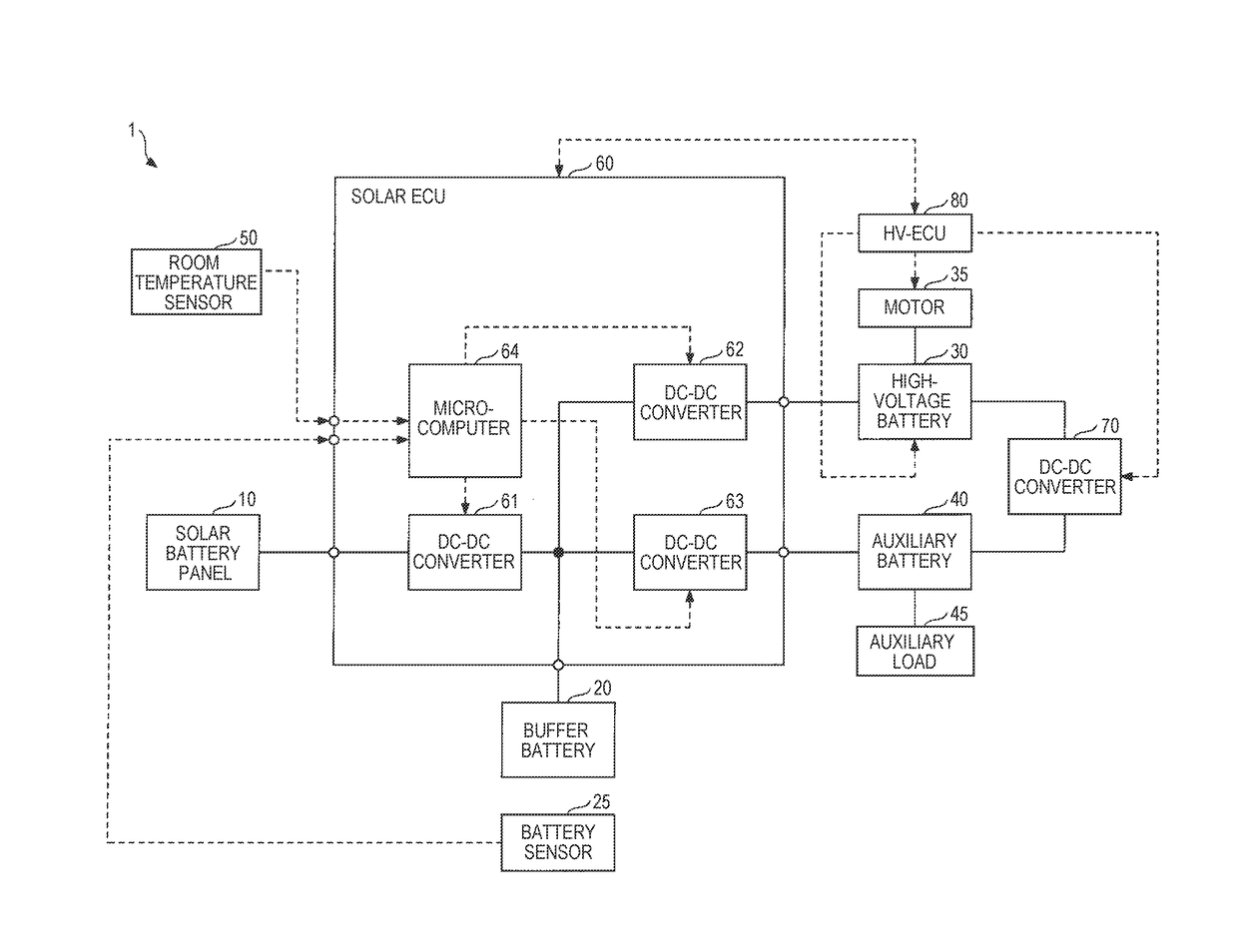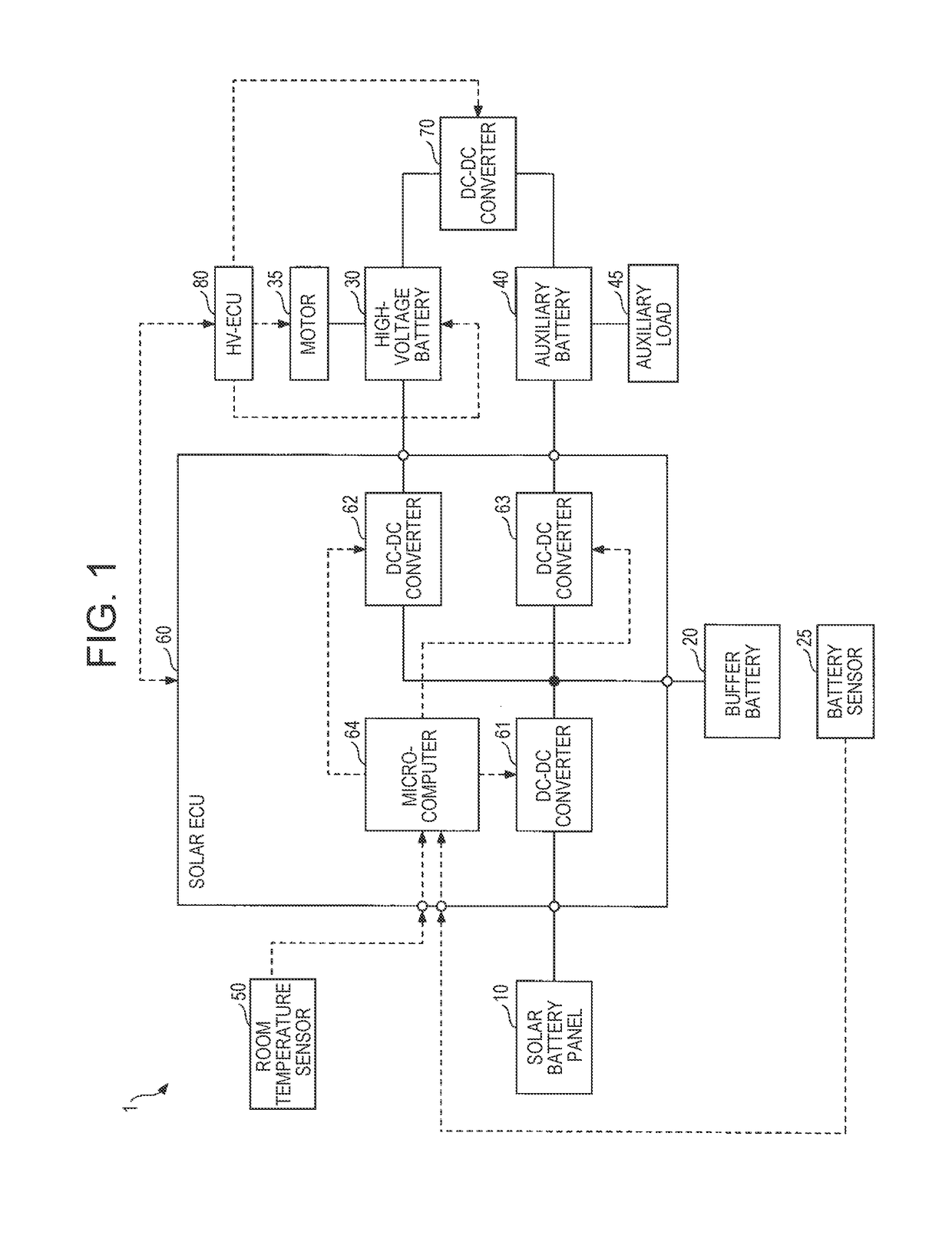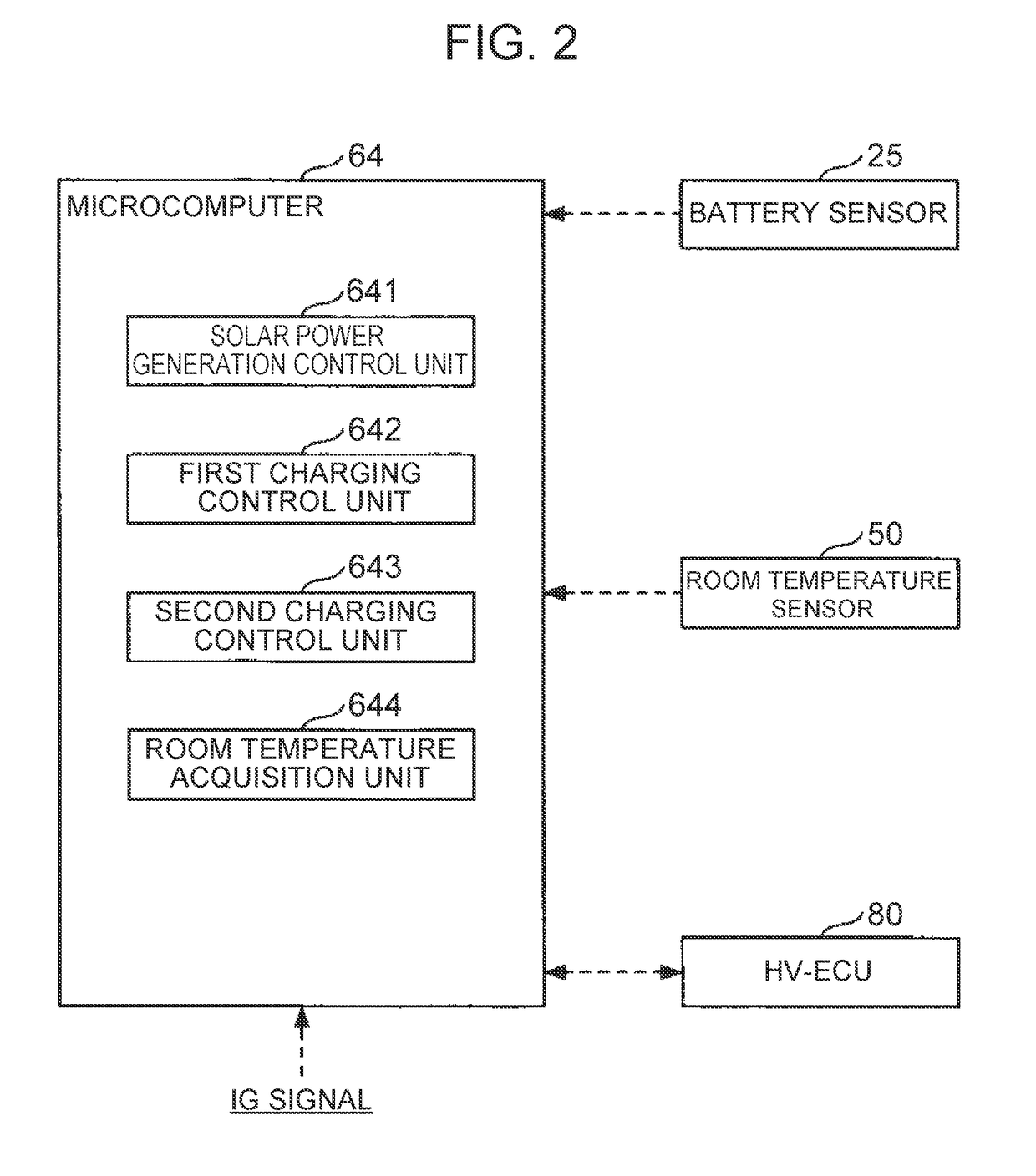Solar battery system
a solar energy and battery technology, applied in the direction of battery/fuel cell control arrangement, light to electrical conversion, electric devices, etc., can solve the problems of ecu temperature rise and ecu operation performance deterioration, and achieve the effect of suppressing temperature ris
- Summary
- Abstract
- Description
- Claims
- Application Information
AI Technical Summary
Benefits of technology
Problems solved by technology
Method used
Image
Examples
first embodiment
[0034]FIG. 1 is a block diagram schematically illustrating one example of the configuration of a solar battery system 1 according to the present embodiment. The solar battery system 1, which is mounted in a vehicle, includes a solar battery panel 10, a buffer battery 20, a battery sensor 25, a high-voltage battery 30, a motor 35, an auxiliary battery 40, an auxiliary load 45, a room temperature sensor 50, and a solar ECU 60. Hereinafter, unless otherwise specified, a term “vehicle” refers to a vehicle in which the solar battery system 1 is mounted.
[0035]The vehicle includes a DC-DC converter 70 and an HV-ECU (electronic control unit that performs integrated control of the entire vehicle in a motor vehicle) 80 as the elements relating to the solar battery system 1.
[0036]In FIG. 1, a solid line represents an electric power system, and a dotted line represents a control (signal) system.
[0037]The solar battery panel 10 is a panel-like module constituted of a plurality of solar battery c...
second embodiment
[0093]A description is now given of the second embodiment.
[0094]A solar battery system 1A according to the present embodiment is different from the first embodiment in the point that the solar ECU 60 is replaced with a solar ECU 60A and more specifically in the point that a temperature sensor 65A is added to be specific. The solar battery system 1A is different from the first embodiment in the point that the microcomputer 64 is replaced with a microcomputer 64A (see FIGS. 5 and 6) and more specifically in the point that the second charging control unit 643 is replaced with a second charging control unit 643A (see FIG. 6) and a temperature state determination unit 645A (see FIG. 6) is added. Hereinafter, the component members similar to those in the first embodiment are designated by similar reference signs, and a description is mainly given of the difference from the first embodiment.
[0095]FIG. 5 is a block diagram schematically illustrating one example of the configuration of the s...
third embodiment
[0108]A description is now given of the third embodiment.
[0109]A solar battery system 1B according to the present embodiment is different from the first embodiment in the point that the room temperature sensor 50 is replaced with a clock 50B (see FIG. 8). The solar battery system 1B is different from the first embodiment in the point that the solar ECU 60 is replaced with a solar ECU 60B (see FIG. 8), and more particularly in the point that the room temperature acquisition unit 644 is replaced with a room temperature acquisition unit 644B (see FIG. 9), and the microcomputer 64 is replaced with a microcomputer 64B (see FIGS. 8 and 9). Hereinafter, the component members similar to those in the first embodiment are designated by similar reference signs, and a description is mainly given of the difference from the first embodiment.
[0110]FIG. 8 is a block diagram schematically illustrating one example of the configuration of the solar battery system 1B according to the present embodiment...
PUM
 Login to View More
Login to View More Abstract
Description
Claims
Application Information
 Login to View More
Login to View More - R&D
- Intellectual Property
- Life Sciences
- Materials
- Tech Scout
- Unparalleled Data Quality
- Higher Quality Content
- 60% Fewer Hallucinations
Browse by: Latest US Patents, China's latest patents, Technical Efficacy Thesaurus, Application Domain, Technology Topic, Popular Technical Reports.
© 2025 PatSnap. All rights reserved.Legal|Privacy policy|Modern Slavery Act Transparency Statement|Sitemap|About US| Contact US: help@patsnap.com



